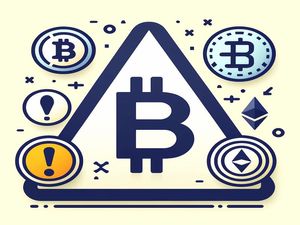A Historic Transaction #
On May 22, 2010, a programmer named Laszlo Hanyecz in Florida made history by paying 10,000 Bitcoins for two pizzas from Papa John’s. At that time, 10,000 Bitcoins were worth about $30. Today, the value of those same Bitcoins has skyrocketed to around $60 million, illustrating Bitcoin's extraordinary rise and the dramatic shift in its value over time.
The Evolution of Money #
To understand Bitcoin, it's essential to know a bit about the history of money. Originally, money was represented by physical items like gold bars or coins. However, carrying such items was impractical, leading to the invention of paper money. This system allowed banks to store valuable metals and issue certificates or banknotes representing those assets.
Over time, the link between paper money and physical goods like gold was severed. Governments began to issue paper money based solely on their promise of value, known as fiat currency. This currency's value comes from the trust in the government that issues it, not from any tangible asset.
The Problems with Fiat Currency #
Fiat money, despite its convenience, has significant drawbacks:
- Centralization: Control of money is centralized in the hands of banks and governments, which can lead to corruption and mismanagement.
- Inflation: Governments and central banks can print unlimited amounts of money, leading to inflation. In extreme cases, such as in Zimbabwe and Venezuela, this has resulted in hyperinflation where the value of money rapidly deteriorates.
- Control: Governments can freeze accounts or invalidate currency, as seen in India’s demonetization.
The Birth of Bitcoin #
In October 2008, a white paper by an anonymous individual or group known as Satoshi Nakamoto proposed Bitcoin, a decentralized digital currency. Bitcoin aims to solve the problems associated with fiat currency by creating a system that doesn't rely on a central authority.
How Bitcoin Works #
- Decentralization: Unlike traditional banks, Bitcoin operates on a decentralized network. This means there is no single point of control. Instead, thousands of computers (nodes) maintain a distributed ledger called the blockchain.
- Transparency: Bitcoin’s ledger is public and transparent. While transactions and balances are visible, the identities behind these transactions remain anonymous.
- Blockchain Technology: The blockchain is a chain of blocks, each containing transaction data. This system is highly secure due to its cryptographic nature. Any attempt to alter past records would require changing the entire chain across all nodes, making tampering virtually impossible.
The Advantages of Bitcoin #
- Ownership Control: Bitcoin provides individuals with complete control over their funds. Unlike traditional accounts, Bitcoin users cannot have their accounts frozen or assets confiscated by a central authority.
- Lower Transaction Costs: Bitcoin transactions can be cheaper than traditional bank transfers because they eliminate intermediaries.
- Decentralization: Bitcoin’s decentralized nature reduces the risk of corruption and mismanagement inherent in centralized systems.
The Challenge of Bitcoin’s Volatility #
Bitcoin’s value can fluctuate dramatically. This volatility can be likened to opening an amusement park where the value of tickets (Bitcoins) varies based on the park's popularity and acceptance. As Bitcoin’s acceptance grows, its value increases, but if adoption stalls, its value can drop.
The Road Ahead #
Bitcoin and other cryptocurrencies represent a new paradigm in the financial world. While Bitcoin’s mainstream adoption is still evolving, it marks a significant shift in how we understand and use money. As the cryptocurrency landscape continues to develop, Bitcoin offers a glimpse into a future where financial systems are more decentralized and transparent.
For those interested in staying updated on the latest in cryptocurrency and Bitcoin, subscribing to related channels and following the latest developments can be a great way to keep informed.











